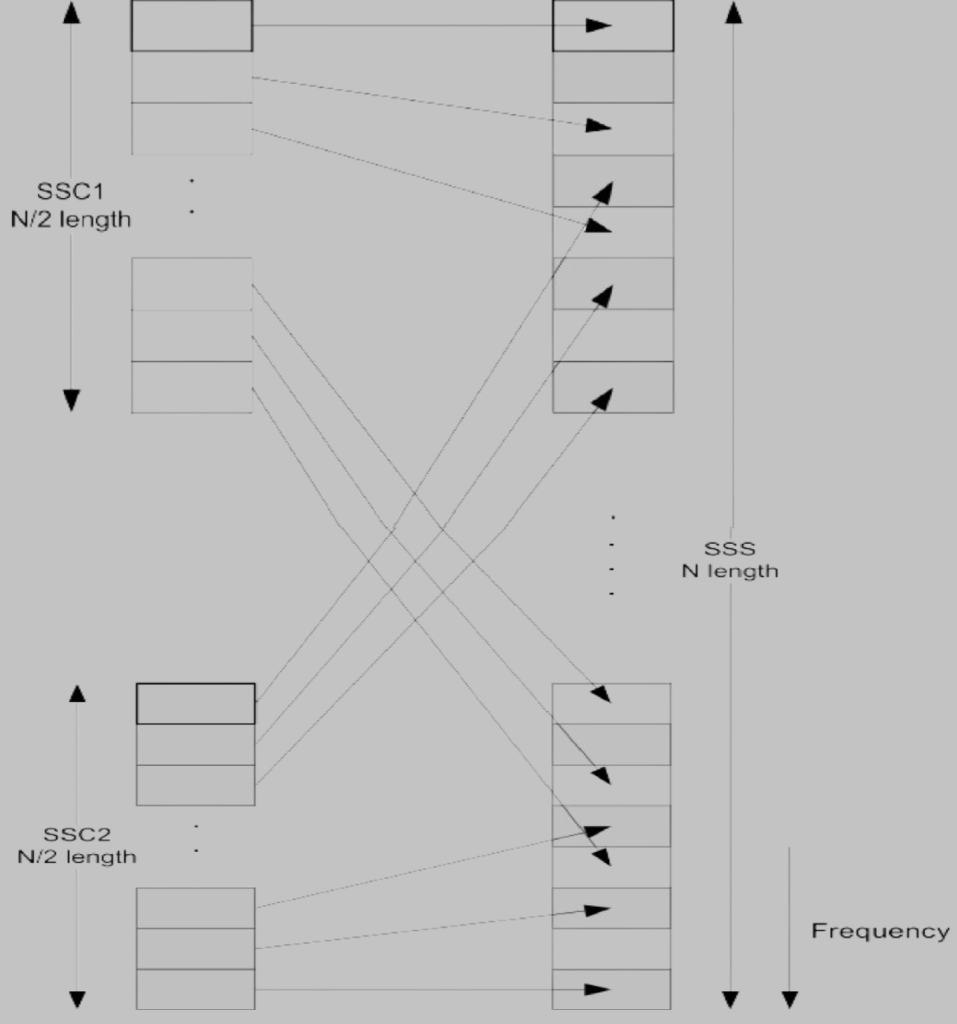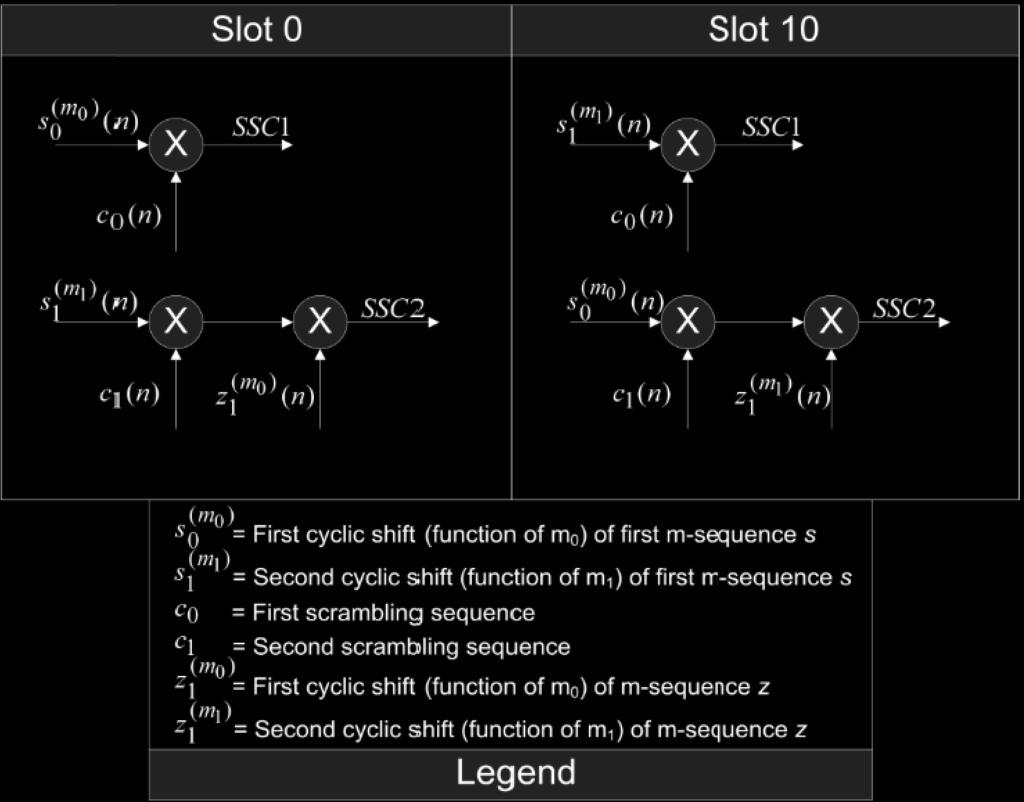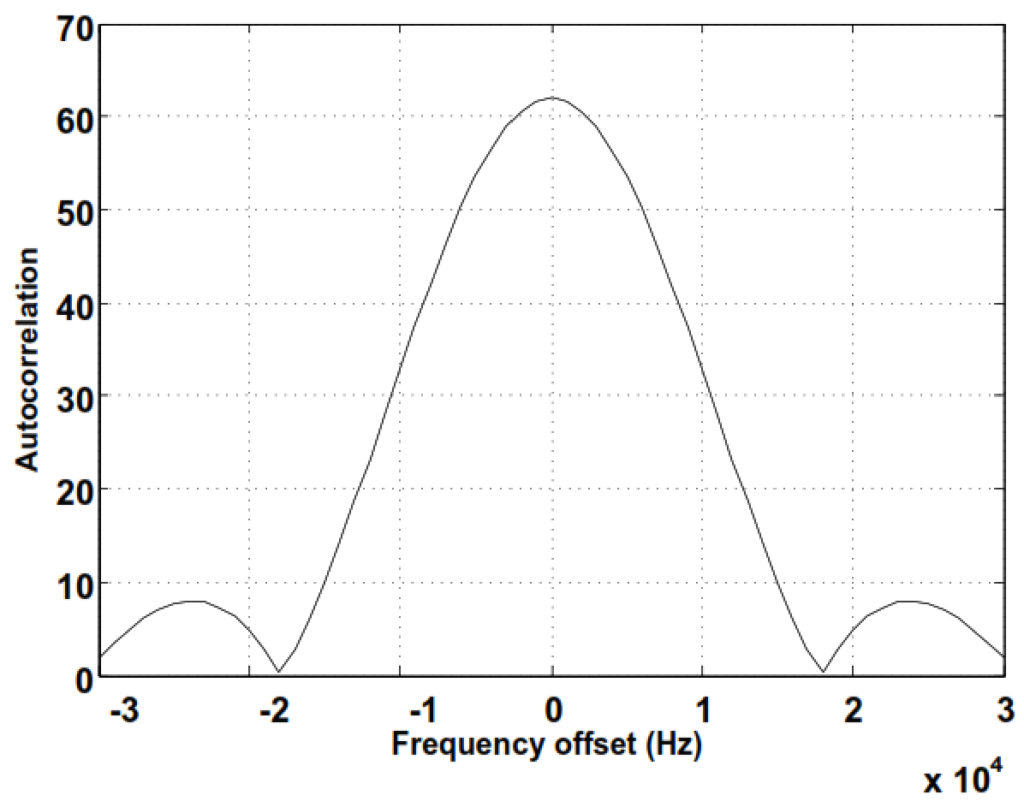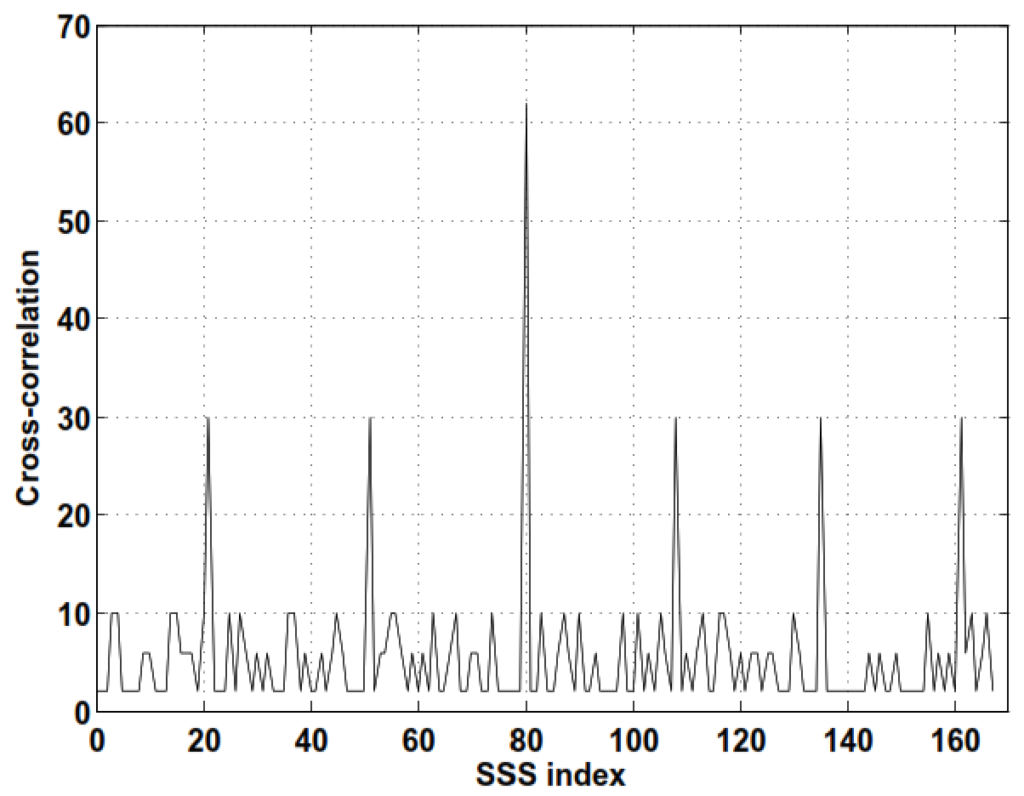The Secondary Synchronization Signal (SSS) in LTE plays a vital role in cell synchronization by providing additional information beyond what the PSS offers. Once the mobile device synchronizes with the SSS, it can retrieve important data such as slot and radio frame timing, duplex method (TDD or FDD), cyclic prefix length, and the 9-bit physical layer cell identity (c-ID).

Structure and Function.
The SSS sequences are derived from maximum length sequences (M-sequences), which are created by cycling through every possible state of a shift register of length ( n ), resulting in a sequence of length ( 2n – 1 ). Each SSS sequence is constructed by interleaving two length-31 BPSK-modulated secondary synchronization codes (SSC1 and SSC2) in the frequency domain. These two codes are different cyclic shifts of a single length-31 M-sequence.

Sequence Construction.
The cyclic shift indices of the M-sequences are functions of the physical layer cell identity group. The codes (SSC1 and SSC2) alternate between the first and second SSS transmissions in each radio frame, enabling the UE to determine the 10 ms radio frame timing from a single SSS observation. This is particularly important for UEs handing over to LTE from another radio access technology. SSC2 is scrambled by a sequence dependent on the index of SSC1, and this sequence is further scrambled by a code dependent on the PSS, which maps to the physical layer identity within the group corresponding to the target eNodeB.
Below picture shows the sequence construction and details of the scrambling operations.

Detection and Properties.
The SSS sequences have favorable frequency-domain properties, being spectrally flat, which aids in their detection with a frequency offset up to ±7.5 kHz. In the time domain, the cross-correlation between any cyclic shifts of an SSS sequence is not as good as for classical M-sequences, (for which the cross-correlation is known to be -1), due to the effects of the scrambling operations.


From the UE’s perspective, SSS detection follows PSS detection, leveraging the known channel characteristics based on the PSS sequence. However, the performance of a coherent detector can degrade if an interfering eNodeB uses the same PSS as the target cell, affecting the quality of channel coefficient estimation. On the other hand, a non-coherent detector’s performance degrades if the coherence bandwidth of the channel is less than the six resource blocks occupied by the SSS.
Complexity Reduction
To reduce the complexity of the SSS detector, the equivalence between M-sequence matrices and Walsh–Hadamard matrices can be exploited. Using this property, a fast M-sequence transform is equivalent to a fast Walsh–Hadamard transform with index remapping. This reduces the complexity of the SSS detector to N log2 N ), where ( N = 32 ).
In conclusion, the SSS in LTE provides essential synchronization information that complements the PSS, ensuring reliable and efficient synchronization of the UE with the LTE network. Its robust design and efficient detection mechanisms are crucial for maintaining high performance in varying network conditions.
Read Also: What is Secondary Synchronization Signal (SSS) in LTE?